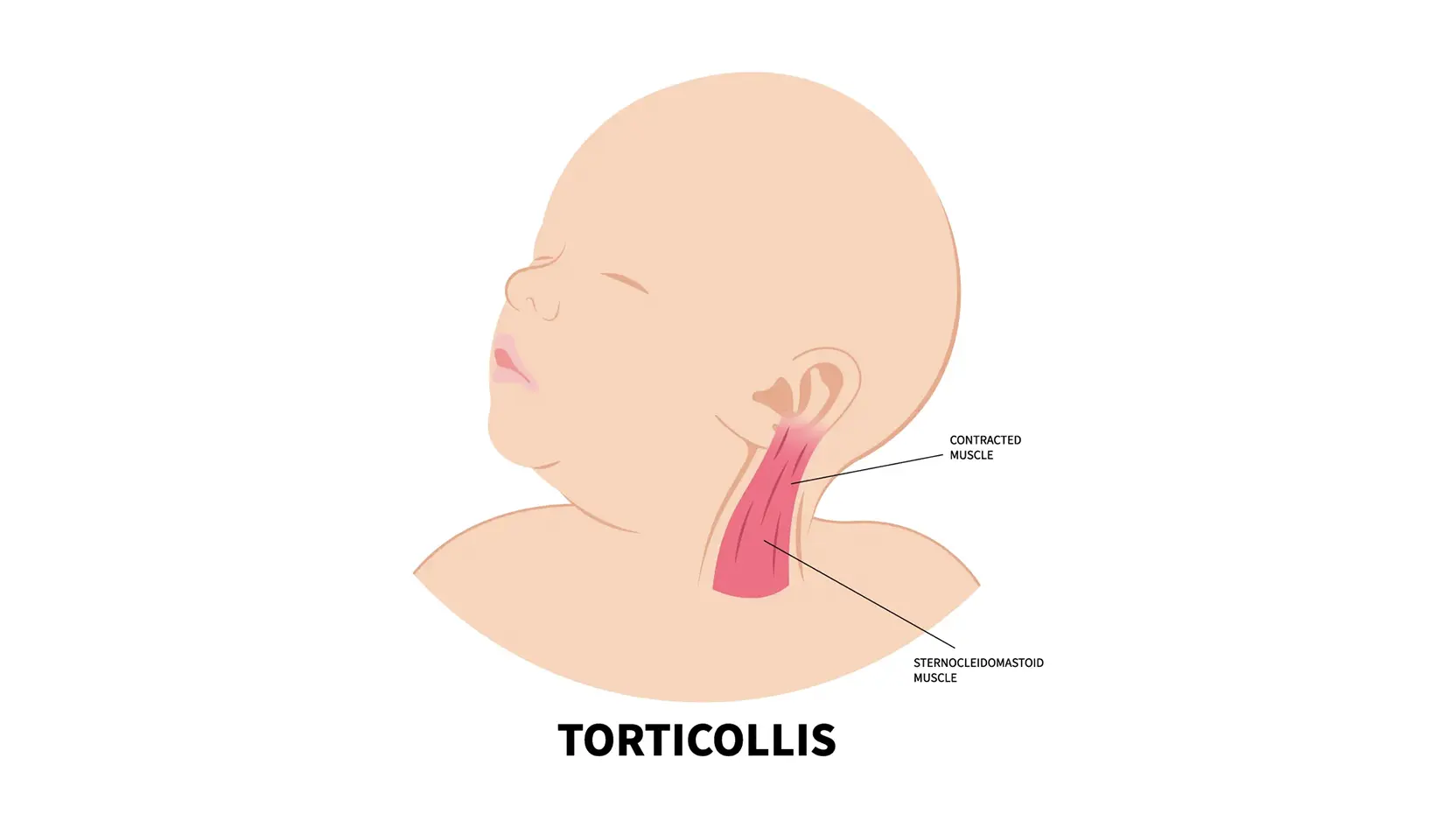Understanding Torticollis: Causes, Symptoms, And Management

Dr. Ranjit Agarwala
PEDIATRICS SPECIALIST
Torticollis, is a condition characterized by the involuntary contraction or shortening of neck muscles, resulting in the tilting or turning of the head to one side. While it can occur at any age, torticollis is most commonly diagnosed in infants (congenital torticollis) and adults (acquired torticollis). Understanding its causes, symptoms, and management is essential for effective treatment.

Torticollis Causes:
- Congenital Torticollis: This type of torticollis is present at birth and often occurs due to abnormal positioning of the fetus in the uterus or injury to the neck muscles during childbirth.
- Acquired Torticollis: Acquired torticollis can develop later in life due to various factors, including muscle spasms, trauma to the neck or head, cervical spine disorders, or infections such as meningitis.
Torticollis Symptoms:
The primary symptom of torticollis is the abnormal positioning of the head, which may include:
- Tilting of the head to one side (head tilt).
- Rotation of the head towards one shoulder (head turn).
- Stiffness or tightness of neck muscles.
- Pain or discomfort in the neck.
- Difficulty moving the head freely.
Torticollis Management:
- Physical Therapy: Physical therapy exercises, including stretching and strengthening of neck muscles, can help improve range of motion and reduce muscle tightness in individuals with torticollis.
- Heat and Massage: Applying heat to the affected area and gentle massage can help relax tense muscles and alleviate pain associated with torticollis.
- Medications: In some cases, over-the-counter pain relievers or muscle relaxants may be prescribed to manage pain and muscle spasms.
- Surgery: In severe cases of torticollis that do not respond to conservative treatment, surgical intervention may be considered to release or lengthen the affected neck muscles.
Conclusion:
Torticollis is a treatable condition, and early intervention is essential for better outcomes. By understanding its causes, recognizing symptoms, and exploring appropriate management options, individuals with torticollis can effectively manage their symptoms and improve their quality of life. Seeking guidance from healthcare professionals is crucial for developing a personalized treatment plan tailored to individual needs and circumstances.
To read more blogs – Click here
